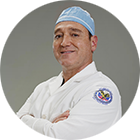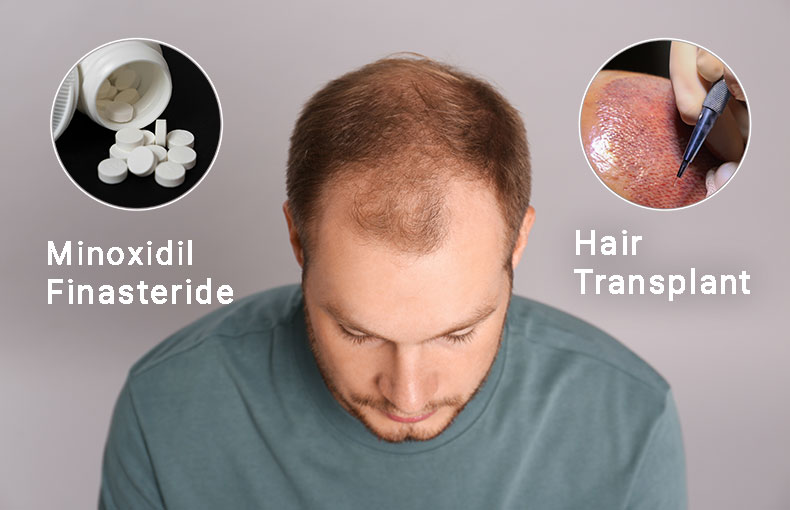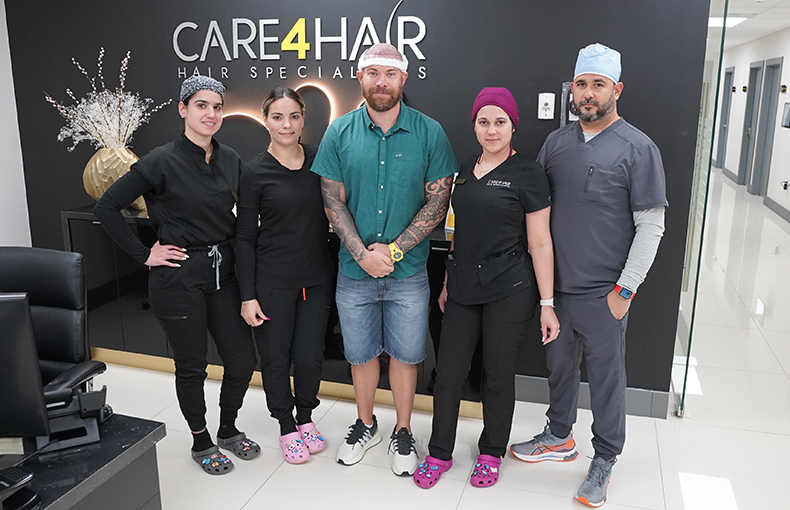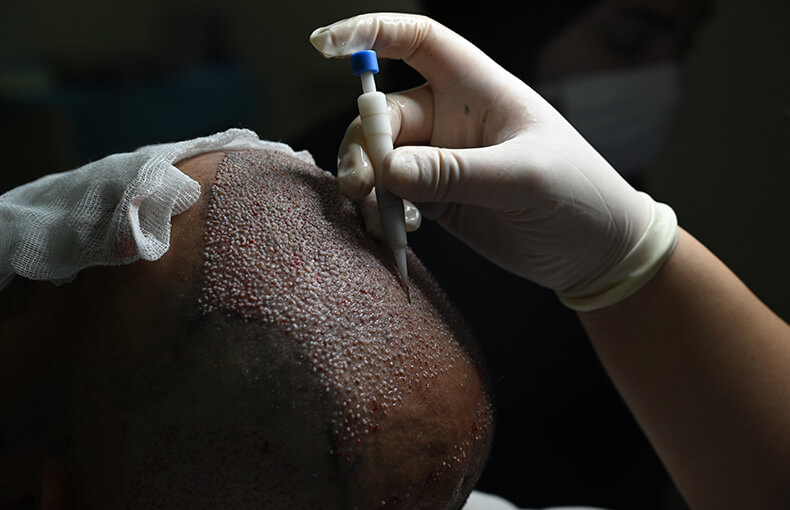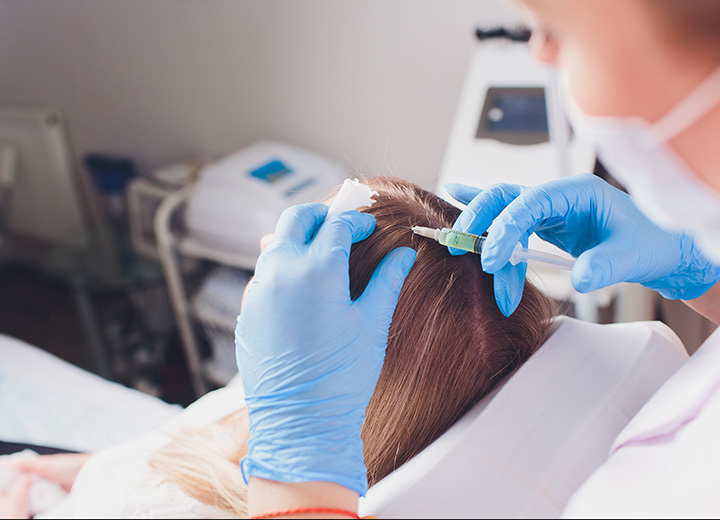
Stem Cell Therapy for Hair Loss: Is It Worth the Hype?
Recently, stem cells—the latest major trend in the world of beauty—have crossed the threshold of the laboratory to become an alternative within hair restoration procedures, with the promise of stimulating the growth of hair follicles on the scalp and achieving long-lasting results.
But what lies behind this enthusiasm for stem cell therapies? To what extent can we trust this procedure if it still does not have the approval of the FDA (Food and Drug Administration of the United States)? The answer to this and other questions can be found at Care4Hair, where one of our goals is to keep you updated with the latest treatments and procedures.
What Are Stem Cells and How Are They Used in Hair Treatments?
Stem cells can self-renew and transform into other specialized cells within the human body. They act as a kind of biological raw material that participates in the repair or replacement of damaged tissues. It is this latter property that drives their use in the treatment of various scalp conditions, including alopecia or hair loss.
Some studies indicate that mesenchymal stem cells have great potential in hair treatments because they possess anti-inflammatory and signaling properties that stimulate the local regeneration of cartilage, bones, and, potentially, dermal tissue and hair. In hair treatments, stem cells from the patient's own hair follicle are also commonly used, as these are located within the hair bulb and play an essential role in the hair growth and shedding cycle. The application is mostly outpatient and minimally invasive since the patient's own cells are used.
Is Stem Cell Therapy Approved by the FDA?
As with any new treatment that suddenly promises miraculous results, a cautious approach is necessary to understand all the benefits and risks. It is also important to follow the guidelines provided by the Food and Drug Administration (FDA), which is responsible for regulating and overseeing the consumption and use of food, medicine, biological products, vaccines, medical devices, tobacco derivatives, cosmetics, and innovative treatments such as genetic therapies and, of course, stem cells.
Despite its popularity, to date, no hair treatment based on the use of stem cells has been approved by the FDA, mainly because the vast majority of research on the subject is still in its early stages, without offering conclusive evidence of its effectiveness or possible side effects.
Let us remember that we are dealing with a biological product whose genetic engineering is complex and highly controlled; therefore, its distribution without proper authorization constitutes a serious violation that may endanger public health. For a product, procedure, or medical device to be approved by the FDA, it must:
- Be safe for the proposed use.
- Be manufactured under safe conditions.
- Follow high-quality standards.
- Have proven efficacy through clinical trials.
It is important to clarify that, despite the restrictions, stem cell therapies have a promising future in dermatology, restorative surgeries, and hair treatments. For now, patients who need to restore their hair safely and with proven results can opt for more established and scientifically backed procedures such as PRP (Platelet-Rich Plasma), which is recognized by the FDA and is part of the wide range of options we offer at Care4Hair.
Is It Worth It? Benefits vs. Risks
Beyond regulations and approvals, one of the most interesting aspects of the hype surrounding stem cell hair therapies is the actual benefits they provide to people suffering from hair loss, severe cases of alopecia, or baldness. It is essential to compare the advantages with the risks that come with a treatment still in the experimental phase. Current disadvantages include:
- Side effects that are difficult to anticipate.
- High costs.
- Lack of FDA approval and regulation.
- Lack of standardization in application methods and techniques.
- Unpredictable results.
As for the positive impact of these procedures, we can mention their contribution to follicular generation through the use of cells produced by the person's own body. Other advantages include:
- Long-term therapeutic potential.
- Ability to increase hair thickness and density.
- Reduced risk of immune rejection.
- Low-intensity and outpatient application
As alluring as it may seem, this type of treatment is not a magical solution or a definitive cure. It is still an alternative that is just beginning to develop, and that requires numerous phases of clinical trials, tests, and studies to demonstrate not only its effectiveness but also the minimization of possible side effects and risks. For now, more established and validated methods such as PRP are much more advisable, with a high approval rate among our clinic's patients.
What’s the Difference Between Stem Cell Therapy and PRP?
The main contrast lies precisely in the type of biological material used. While stem cells are obtained from adipose tissue or the patient’s scalp (and for other regenerative therapies, they can be extracted from other parts of the body such as the bone marrow), PRP comes from the patient’s own blood, which is subjected to a centrifugation process to separate and concentrate the platelets.
Another significant difference comes from the level of approval and clinical support provided by studies, both in laboratory animals and human subjects. In this sense, Platelet-Rich Plasma has the advantage, as it has been widely researched and is commonly used in medical and aesthetic procedures. In contrast, stem cell therapies are still in the experimental phase, are not FDA-approved, and their use still generates uncertainty.
In terms of functionality, it's worth noting that mesenchymal stem cells, or those derived from the hair follicle, secrete growth factors and theoretically have the ability to self-regenerate or become other cell types. Studies suggest that they may reactivate existing follicles and strengthen those that are dormant or partially atrophied.
PRP, on the other hand, stimulates the vascularization of the scalp, strengthens existing hair follicles, and prolongs the growth phase of the hair cycle. These properties make it the perfect complement to the hair transplant procedures we perform at Care4Hair, where we recommend and integrate PRP injections three months after a procedure using the FUE (Follicular Unit Extraction) technique.
And at Care4Hair? This Is What We Offer You
At Care4Hair, while we stay at the forefront of the most promising trends in hair restoration, we also understand the importance of offering our patients the most proven and scientifically backed treatment. Do stem cells offer interesting possibilities? Yes, but studies on them are still in the experimental stages, and results are not yet entirely reliable.
That's why, in our clinic, we choose Platelet-Rich Plasma (PRP) as one of the most effective tools in treating hair loss. This method uses growth factors from your own blood and helps revitalize the tissue of your scalp. It is also outpatient and minimally invasive.
The best solution for restoring lost hair continues to be hair transplantation, delivering permanent and transformative results in just a few months. Thousands of patients have already regained their hair with proven results at our clinic.
Naturally, you may have many questions about stem cells, PRP, or any other hair restoration treatment, and we're here for that, too. Call or write to Care4Hair today to schedule a completely free evaluation consultation. Our specialists can assess your case, study your facial morphology, and propose the options that best suit your needs.












